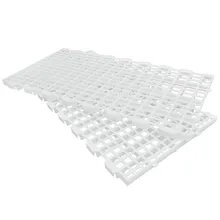small fish feed machine
Nov . 15, 2024 15:23 Back to list
small fish feed machine
Understanding Small Fish Feed Machines Enhancing Aquaculture Efficiency
In recent years, the aquaculture industry has witnessed exponential growth due to rising global demand for fish protein. As a result, the significance of small fish feed machines has surged, as these machines play a crucial role in producing high-quality feed for various fish species. This article explores the workings, benefits, and implications of small fish feed machines in the context of modern aquaculture.
What is a Small Fish Feed Machine?
A small fish feed machine is a compact, efficient device designed primarily for the production of fish feed. It utilizes raw materials, such as grains, fishmeal, and nutritional additives, to create pelletized feed suitable for different types of fish. These machines utilize advanced technology to ensure that the feed is nutritionally balanced, promoting optimal growth in fish while reducing waste and maintaining water quality in aquaculture systems.
The Working Mechanism
The operation of a small fish feed machine typically involves several key processes grinding, mixing, conditioning, extruding, and drying.
1. Grinding Raw materials are first ground into a fine powder to ensure uniformity in the final product. This step is vital as it ensures that the nutrients are evenly distributed within each pellet.
2. Mixing The ground materials are then mixed, usually with water and other additives, to create a homogeneous mixture. This thorough blending is essential for ensuring that the nutritional content is consistent throughout the feed.
3. Conditioning In this stage, the mixed ingredients are heated and conditioned to enhance the feed's digestibility and reduce the presence of harmful pathogens.
4. Extruding The conditioned mixture is passed through an extruder, where it is shaped into pellets. The extrusion process not only forms the pellets but also gelatinizes the starches, making them easier for fish to digest.
small fish feed machine

Benefits of Using Small Fish Feed Machines
1. Customization and Flexibility One of the notable advantages of small fish feed machines is their ability to produce customized feed formulations. Farmers can adjust the ingredients based on the specific dietary requirements of the fish species they are raising, whether it be tilapia, catfish, or ornamental fish.
2. Cost-Effectiveness Producing feed in-house reduces reliance on external suppliers, leading to significant cost savings. Farmers can use locally available raw materials, further minimizing expenses.
3. Quality Control With an in-house fish feed production system, aquaculture operators can maintain strict quality control. This ensures that the feed meets specific nutritional standards, contributing to healthier fish and better yields.
4. Reduced Waste The precision of small fish feed machines allows for the production of feed that meets the exact consumption needs of fish. This reduces waste, which is critical for maintaining water quality in aquaculture systems.
5. Sustainability As the aquaculture industry faces scrutiny regarding its environmental impact, small fish feed machines promote sustainability by enabling the use of alternative protein sources, such as insects or algae, thus reducing the pressure on wild fish populations.
Conclusion
The role of small fish feed machines in modern aquaculture cannot be overstated. By providing a means for the efficient and sustainable production of high-quality fish feed, these machines not only enhance the overall productivity of fish farming operations but also contribute to the sector's sustainability goals. As technology continues to evolve, it is likely that small fish feed machines will become even more sophisticated, allowing aquaculture practices to keep pace with global demand while respecting environmental boundaries. Investing in such technology is not just a trend; it is a necessary step towards achieving a more sustainable and efficient aquaculture industry for the future.
-
Hot Sale 24 & 18 Door Rabbit Cages - Premium Breeding Solutions
NewsJul.25,2025
-
Automatic Feeding Line System Pan Feeder Nipple Drinker - Anping County Yize Metal Products Co., Ltd.
NewsJul.21,2025
-
Automatic Feeding Line System Pan Feeder Nipple Drinker - Anping County Yize Metal Products Co., Ltd.
NewsJul.21,2025
-
Automatic Feeding Line System - Anping Yize | Precision & Nipple
NewsJul.21,2025
-
Automatic Feeding Line System - Anping Yize | Precision & Nipple
NewsJul.21,2025
-
Automatic Feeding Line System-Anping County Yize Metal Products Co., Ltd.|Efficient Feed Distribution&Customized Animal Farming Solutions
NewsJul.21,2025






